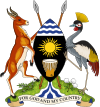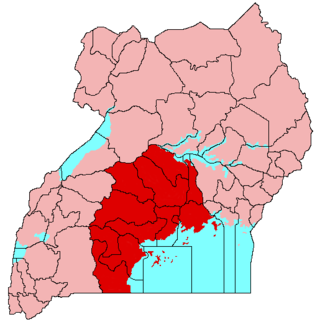
Buganda is a Bantu kingdom within Uganda. The kingdom of the Baganda people, Buganda is the largest of the traditional kingdoms in present-day East Africa, consisting of Uganda's Central Region, including the Ugandan capital Kampala. The 14 million Baganda make up the largest Ugandan region, representing approximately 16% of Uganda's population.

Court dress comprises the style of clothes and other attire prescribed for members of courts of law. Depending on the country and jurisdiction's traditions, members of the court may wear formal robes, gowns, collars, or wigs. Within a certain country and court setting, there may be many times when the full formal dress is not used. Examples in the UK include many courts and tribunals including the Supreme Court of the United Kingdom, and sometimes trials involving children.

Formal wear or full dress is the Western dress code category applicable for the most formal occasions, such as weddings, christenings, confirmations, funerals, Easter and Christmas traditions, in addition to certain state dinners, audiences, balls, and horse racing events. Generally permitted other alternatives, though, are the most formal versions of ceremonial dresses, full dress uniforms, religious clothing, national costumes, and most rarely frock coats. In addition, formal wear is often instructed to be worn with official full size orders and medals.

A folk costume expresses a national identity through clothing or costume, which is usually associated with a specific region or period of time in history. It can also indicate social, marital, or religious status. If the costume is used to represent the culture or identity of a specific ethnic group, it is usually known as ethnic costume. Such costumes often come in two forms: one for everyday occasions, the other for traditional festivals and formal wear. The word "costume" in this context is sometimes considered pejorative due to the multiple senses of the word, and in such cases "clothing", "garments" or "regalia" can be substituted without offense.

A kaftan or caftan is a variant of the robe or tunic. Originating in Asia, it has been worn by a number of cultures around the world for thousands of years. In Russian usage, kaftan instead refers to a style of men's long suit with tight sleeves.

Culture of Uganda is made up of a diverse range of ethnic groups. Lake Kyoga forms the northern boundary for the Bantu-speaking people, who dominate much of East, Central, and Southern Africa. In Uganda, they include the Baganda and several other tribes

African clothing is the traditional clothing worn by the people of Africa.

The dashiki is a colorful garment that covers the top half of the body, worn mostly in West Africa. It has formal and informal versions and varies from simple draped clothing to fully tailored suits. A common form is a loose-fitting pullover garment, with an ornate V-shaped collar, and tailored and embroidered neck and sleeve lines. It is frequently worn with a brimless kufi cap and pants. It has been popularized and claimed by communities in the African diaspora, especially African Americans.
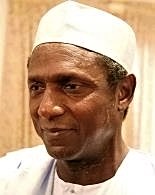
A kufi or kufi cap is a brimless, short, and rounded cap worn by men in many populations in North Africa, East Africa, West Africa, South Asia, and the Middle East. It is also worn by men throughout the African diaspora. The cap has strong associations with many Islamic cultures and pan-African pride. In the United States and the United Kingdom, it is also called a "taqiyah".
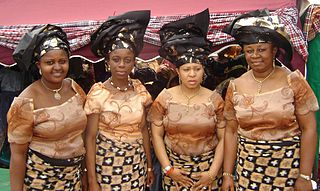
The wrapper, lappa, or pagne is a colorful garment widely worn in West Africa by both men and women. It has formal and informal versions and varies from simple draped clothing to fully tailored ensembles. The formality of the wrapper depends on the fabric used to create or design it.
This is a list of existing articles related to fashion and clothing. For individual designers, see List of fashion designers

Aso oke hat, known as fila in the Yoruba language, is a soft hat traditionally worn by the Yoruba people of Western Africa. It is made of hand-woven aso oke fabric, cotton, velvet, or damask. They are usually lined with cotton, but can be unlined if crafted to be worn for a single event.
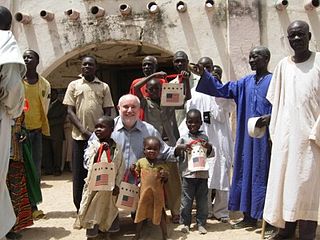
A Senegalese kaftan is a pullover men's robe with long bell sleeves. In the Wolof language, this robe is called a mbubb or xaftaan and in French it is called a boubou. The Senegalese caftan is an ankle length garment. It is worn with matching drawstring pants called tubay in Wolof. Normally made of cotton brocade, lace, or synthetic fabrics, these robes are common throughout West Africa. A kaftan and matching pants is called a kaftan suit. The kaftan suit can be worn with a kufi cap. Senegalese kaftans are formal wear in all West African countries. In the United States, some merchants sell this robe as a Senegalese style dashiki pant set or a full length dashiki pant set. Men who are members of the Hausa tribe, wear these kaftans to formal events like naming ceremonies and weddings. In the United States, a kaftan is one of three formal suits, equivalent to the tuxedo, that African-American grooms select for their weddings. The other styles being the dashiki pant set, and the grand boubou, pronounced gran boo-boo. There are various other formal robes that are worn throughout West Africa, and with the exception of the Yoruba Gbarie robe, pronounced barry, most of these are a form of Islamic dress, see sartorial hijab. The kaftan is worn by Christians, African Jews, Muslims, and followers of African traditional religion. Furthermore, Senegalese kaftans are common among men of African descent in the African diaspora. The Senegalese kaftan is men's attire. In West Africa, and the United States, this robe is not worn by women. The women's robe is called a kaftan.

The kofia is a brimless cylindrical cap with a flat crown, worn mainly by some men in East Africa.
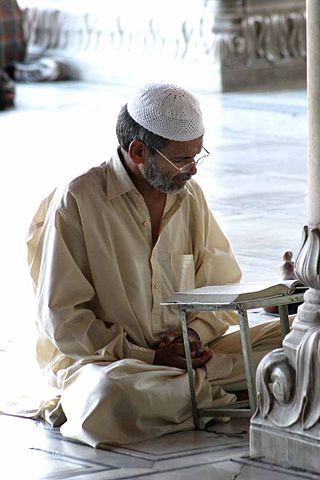
The Taqiyah, also known as tagiyah or araqchin, is a short, rounded skullcap worn by Muslim men. In the United States and the United Kingdom, it is also referred to as a "kufi", although the Kufi typically has more of an African connotation. Aside from being an adornment, the taqiyah has deeply ingrained significance in Islamic culture, reflecting the wearer's faith, devotion, and sometimes regional identity. While the taqiyah is deeply rooted in Muslim traditions, its use varies based on cultural context rather than strict religious guidelines.

A gomesi, also known as a Busuuti or Bodingi, is a colorful floor-length dress. It is the most commonly used costume for women in Buganda and Busoga. Traditional male attire is the kanzu. The gomesi has had many changes in its uses and design since its origination.
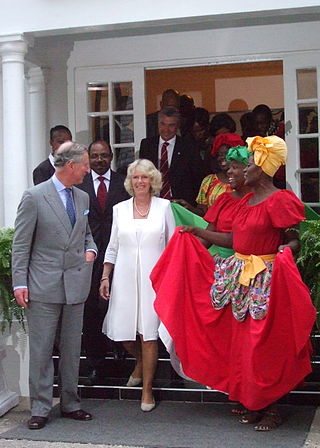
A Quadrille dress is a bespoke dress worn by women in Caribbean countries. The quadrille dress is the folk costume of Jamaica, Dominica and Haiti. It is known by a different name in each country. The dress is particularly worn during the quadrille dance, but also other occasions.

The boubou or grand boubou is a flowing wide-sleeved robe worn across West Africa, and to a lesser extent in North Africa, related to the dashiki suit.

A bisht, known in some Arabic spoken dialects as mishlaḥ or ʿabāʾ, is a traditional men’s cloak popular in the Arab world, and worn in general for thousands of years.
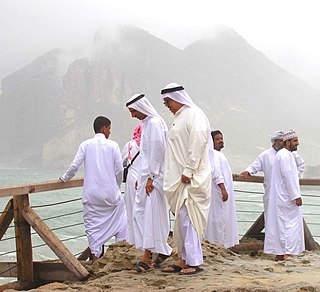
Thawb or thobe is an Arab dress for the inhabitants of the Arabian Peninsula, also called dishdashah, and kandurah, kandoora or gandurah in varieties of Arabic. A long-sleeved ankle-length traditional robe, it is mainly worn by men in the Arabian Peninsula, Jordan, Syria, Palestine, Lebanon, North Africa, and some countries in East and West Africa, with regional variations in name and style. It is also worn by Muslim men in the Indian subcontinent due to its modest appearance, and is referred to as jubbah. Depending on local traditions, a thawb can be worn in formal or informal settings; in the Gulf states thobes are the main formal attire for men. The term "thobe" is also used in some varieties of Arabic to refer to women's attire, such as in Palestine and Sudan.





















